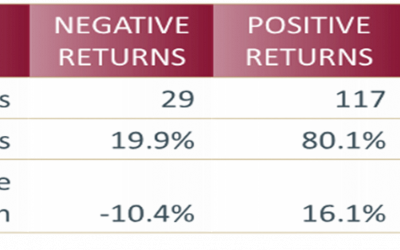Please note as there is no legislation out on this policy we are working on the information in press releases.
Labors proposal to take away the refund of franking credits only indicates the lengths they will go to buy votes. Simply put this is taking money from what are considered “Rich People” and giving it to the what they consider to be “Poor People”.
Also note that, more than 92 per cent of taxpayers do not receive a cash refund for excess imputation credits, and won’t be affected at all by this change.
Only a select few will be affected but it will have a large impact, for many it will be close to a 25%-30% reduction in their overall income. Image the government making legislation to drop you wage by 25%!
Some facts to keep in mind:
1. that a person earning $40,000 a year pays $5,347 a year tax including Medicare levy, or 13.4% of their taxable income. A person earning $95,000 a year pays $24,682 tax, or 26% of their taxable income. Keeping in perspective the person earning $95,000 has earned 2.4 time more income but paid 4.6 times more tax.
2. Only 2.9% of taxpayers earn more than $180,000 a year, and they contributed 29.8% of the total income tax collected. There are 16.6% in the second-lowest tax bracket and they contributed 39% of total income tax.
So 19.5% of taxpayers are contributing almost 70% of our total income tax and now we want more tax from them.
Many would agree with this sort of policy on the face of it. In fact, this policy will have little effect on the truly rich and really only affect a small group of people who have above average wealth.
Labor would have you believe that this will only affect the super-rich, being tax payers with $10 million or more in superannuation. In fact, it will have almost no affect at all on them. They have already been dealt with under the new Super Pension regulation which started on the 01/07/2018.
For people with large Superannuation balances ($10 Million) they have a fairly standard asset allocation of cash 20%, Australian shares 35%, international shares 25% and property 20%. Let’s say the annual income is $390,000, including franked dividends of $140,000, on which franking credits are $48,000. When you gross up the income for the franking credits, the taxable income of the fund becomes $438,000.
Before the Liberals changed the system last July, the franking credits of $48,000 would have been refunded. But under the new rules limiting the amount of money which can be in a tax free Pension, 70% of the fund is now in accumulation mode and is subject to tax. The tax payable by the fund has become $46,000. Imputation credits pay all this, leaving just $2,000 for Labor’s new tax claim under the proposed policy. I’m sorry Bill, but Malcolm beat you to it. So a $10 million super fund has to pay an extra $2000, not quite the expectations of the press relief.
Quote from Chris Bowen’s website:
Self-managed super funds are a major beneficiary of this practice, with 50 per cent of the benefit to SMSFs accruing to the top 10 per cent of SMSF balances – with some funds receiving cash refunds of more than $2.5 million a year.
It is our understanding that anyone receiving the Age Pension will still be entitled to receive their franking credits. This means that if you have $848,000 or less in super as a couple you will still be entitled to receive the excess franking credits.
As shown above large super funds with super balances in excess of the $1.6 million Account Based Pension cap, will be able to use some or all of their franking credits offsetting other tax already payable under the changes made to super by the LNP.
So who pays this tax:
1. A home owner couple with Account based pensions with a balance between $848,000 and $3.2 million will pay the bulk as they will lose all franking credits which would have been refunded.
2. A home owner Individuals with an Account based pension with a balance between $564,000 and $1.6 million will pay the bulk as they will lose all franking credits which would have been refunded.
3. Self-Funded home owner retires with assets above $848,000 if a couple or $564,000 if single outside of super. They will lose all franking credits which would have been refunded.
Example 1 – Self Funded Retirees with $1,000,000 in super.
Couple own their own house and retire with $1million in super. Their super makes a return of 7% including franking. As the couple are over age 65 and both have an Account Based pension they will not pay any tax. Their income at present will be $70,000 combined including the franking credit refund.
Once the new legislation is put in place they will lose the franking credit rebate which would be $21,000 reducing they annual income to $49,000.
Example 2 – Age Pension and Super $400,000 in super.
Couple own their own house and retire with $400,000 in super. Their super makes a return of 7% including franking. As the couple are over age 65 and both have an Account Based pension they will not pay any tax. Their income at present will be $28,000 including the franking credit refund from Super and they would receive $28,485 in Age Pension. Total income of $56,486.
Under this legislation there is no incentive for people to add to the superannuation or try to self-fund their retirement. The aim will now be to make sure that you qualify for the Age Pension or be discriminated against by the government.
There are a couple of strategies you can use to try and make the best of the situation:
a. Spend, so meet asset or income test so franking is returned
b. Increase your exposure to investment that are not franked, such as overseas investments
c. Hold the Australian shares in a separate entity which will be able to receive the franking credits.
d. If you have a SMSF you may think about adding the kids into the fund to allow them to benefit from the franking credits.
I am sure that there will be new products put in place to allow investors to reduce the impact of this legislation being put in place.
Fake News
Do not be fooled by fake news, one statement that the Labor have put out is:
“While those people will no longer receive a cash refund, they will not be paying additional tax.”
This statement is absolute lies, see example 1 above, if you are losing $21,000 in a tax refund you are paying more tax.
This is simply a tax on the hard workers who have saved for retirement and have not put their hand out for the Age Pension. But, it does not affect the majority so most people will not give it a second thought.
This policy goes against the very reason superannuation was introduced. It was brought in so people could look after themselves in retirement and not have to depend on the age pension. This policy takes away this incentive; it just became less attractive for 8% of the population.
For those who for whatever reason have to relay in the Age Pension, you can be sure of one thing, as more people join the ranks of receiving the Age Pension the less you will get.
If you would like more information how this may affect you directly, please contact us on 07 4771 4577.




